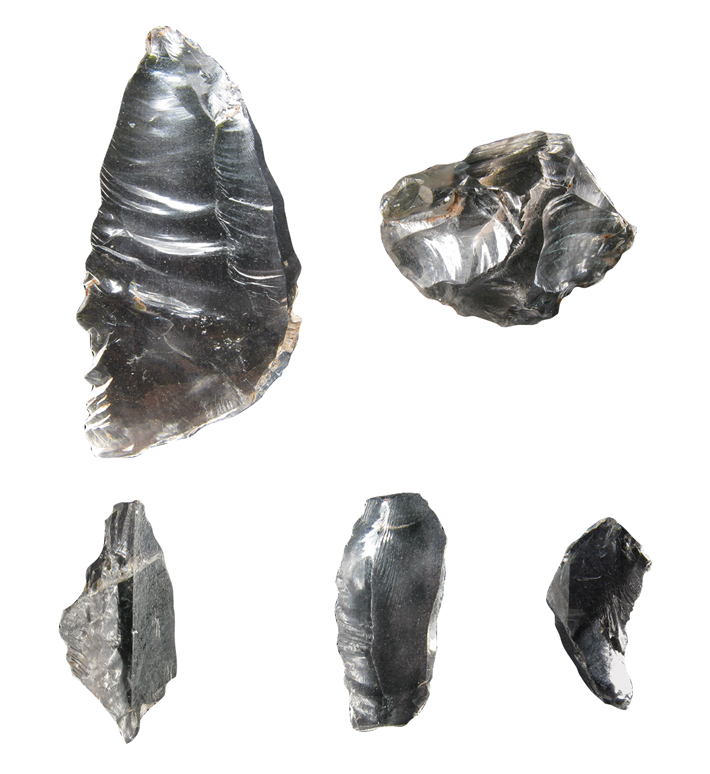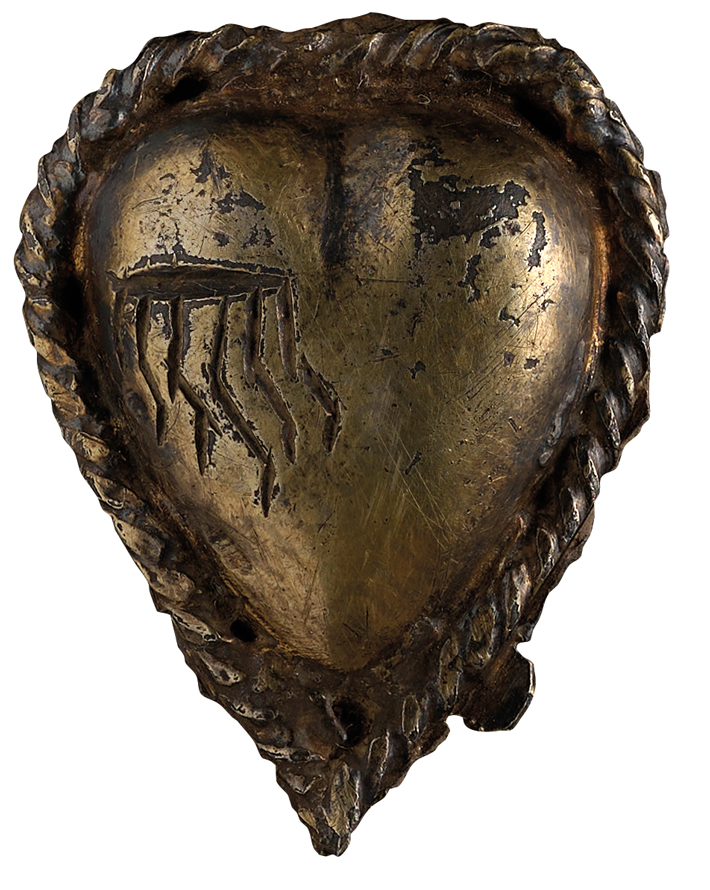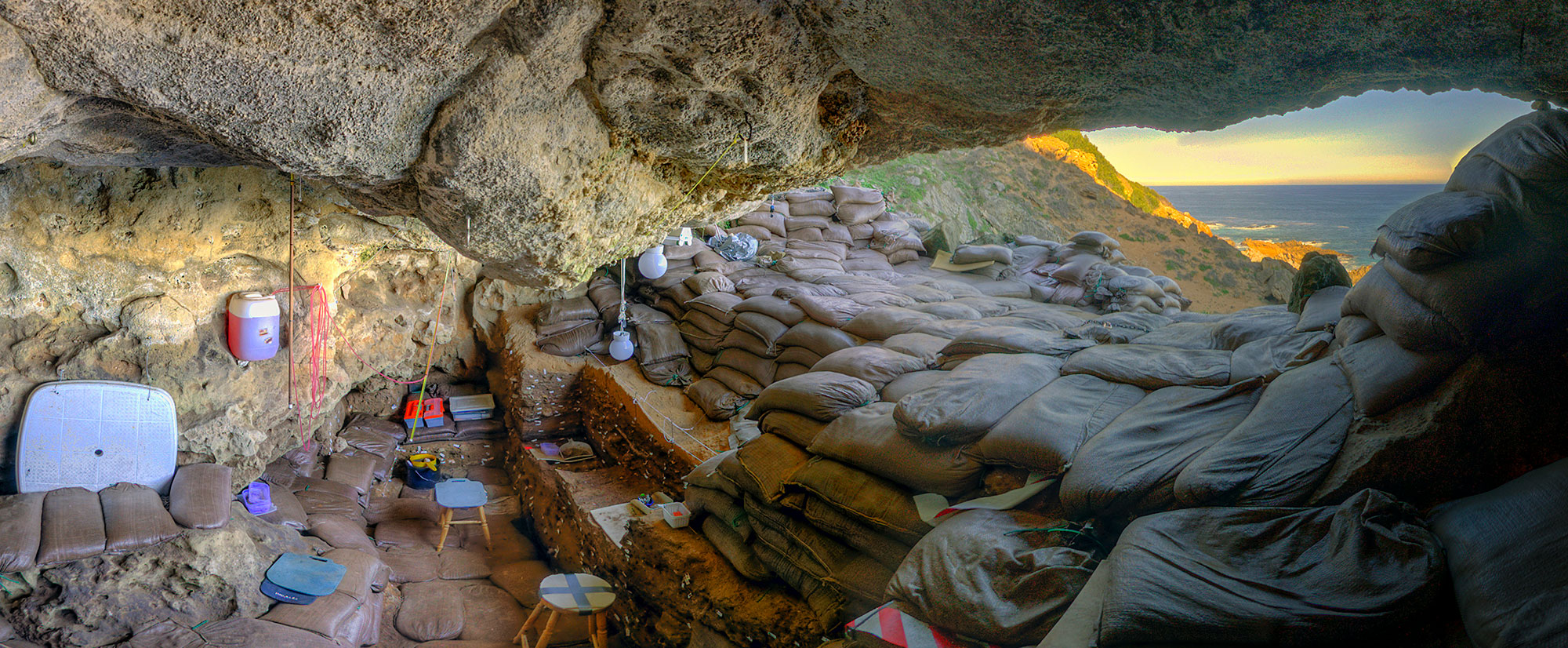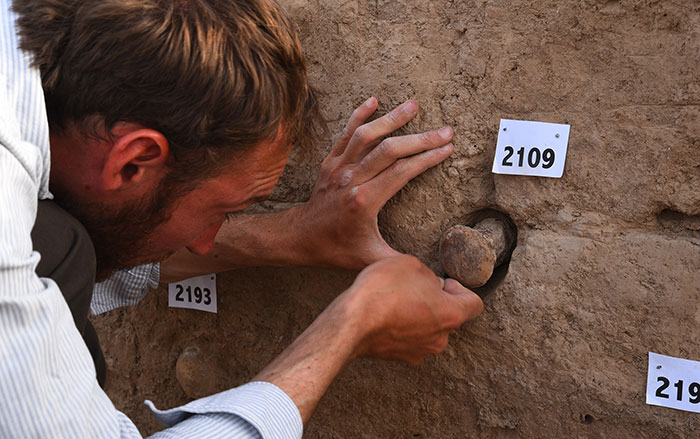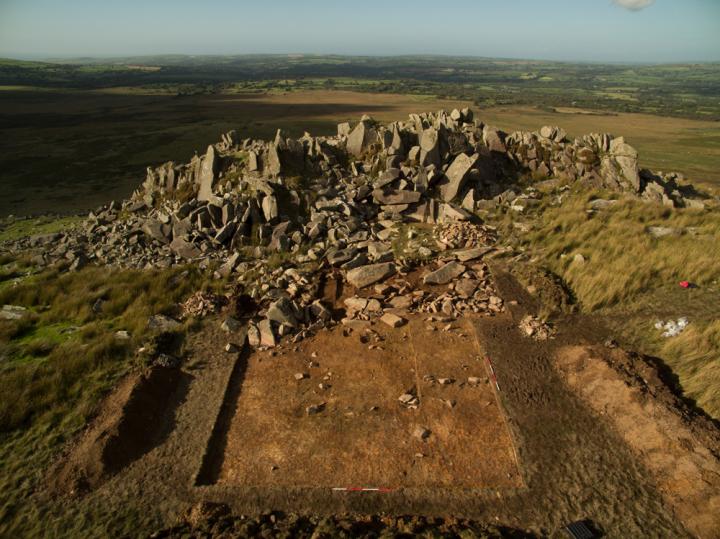
LONDON, ENGLAND—According to a report in The Guardian, an excavation led by Mike Parker Pearson of University College London has investigated two Neolithic quarries in Wales at Carn Goedog, a crag where spotted dolerite rock rests in pillar-shaped slabs on the northern side of the Preseli Hills. Charcoal discovered between the slabs of rock was radiocarbon dated to the fourth millennium B.C. Wedge-shaped stone tools made of imported mudstone or sandstone had been hammered into V-shaped gaps cut into the rock between the naturally formed slabs. A platform paved with stones found at the base of the outcrop may have served as a loading dock for the pillars. It had been previously suggested that the bluestone pillars at Stonehenge were carved from rock in the southern Preseli Hills, and perhaps transported to Wiltshire by raft some 143 miles along the Severn Estuary and the River Avon to the Salisbury Plain. Team member Rob Ixer of University College London thinks it is unlikely that if the Stonehenge bluestones had been quarried at Carn Goedog, they were then dragged over the Preseli Hills in order to transport them by water. He suggests it is more likely the monoliths were transported overland from Carn Goedog to Wiltshire. In addition, Ixer said the quarries’ carbon dates are old enough to make it possible that the stones had been erected in a circle in Wales before being transported to Stonehenge. For more, go to “Quarrying Stonehenge.”




